Hybrid technology continues to evolve as consumers demand more from these alternative energy automobiles. But with several variations of hybrid technology being utilized in vehicle manufacture in the last years, it can get confusing to understand how a hybrid works and what defines a hybrid car. We are here to help you understand the different types of hybrids, the advantages and disadvantages, and everything you need to know about these alternative fuel vehicles.
What Is A Hybrid Car?
A hybrid vehicle is any kind of vehicle that uses two or more propulsion systems. They work by integrating an internal combustion engine, electric motor, and an electric hybrid battery (additional to the 12-volt starting battery).
Hybrid cars exist to improve fuel efficiency. Like the label suggests, these cars have two sources of the power lurking under the hood: a conventional gas combustion engine as well as an electric motor. How these two work in unison is the core of hybrid vehicle existence.
Depending on the type and design hybrids differ from operating mostly on the internal combustion engine with some assistance from the electric motor to the opposite – operating primarily on the electric motor, using the internal combustion engine only when significant power is needed.
Hybrids can boast up to 40 percent fuel savings (sometimes more) over a comparable gasoline vehicle. And that also translates into fewer greenhouse gases spewed into the environment.


Understanding Hybrid Cars Basics
If you’re considering a hybrid for your next vehicle purchase, you might be wondering what sets a hybrid car apart from a conventional combustion engine vehicle.
Having an understanding of the technology basics can make the transition to hybrid vehicle ownership much easier. Just as the label suggests, hybrid cars are a cross between a conventional vehicle and their all-electric cousins.
Depending on the particular hybrid, the engine and motor can be configured in one of a variety of ways to meet the desired objective which is often to maximize fuel efficiency while on your daily commute. They can also be targeted toward other purposes, such as a desire for greener living.
Many are propelled primarily by an internal combustion engine, but because of the boost available through the electric motor, that engine can be smaller, more environmentally friendly, and more efficient.
The electric motor helps to capture wasted energy and convert it into electric energy that can be stored in a battery till used by the electric motor.
Some hybrids share more in common with their all-electric counterparts – right down to being plugged in. Others don’t require an external source of electricity. They are drawing all the energy the electric motor needs through the workings of the conventional gasoline engine and technologies like regenerative braking.
Hybrid vehicle technologies continue to advance at a steady pace but still, there are some basic features you can identify in most hybrids available today.
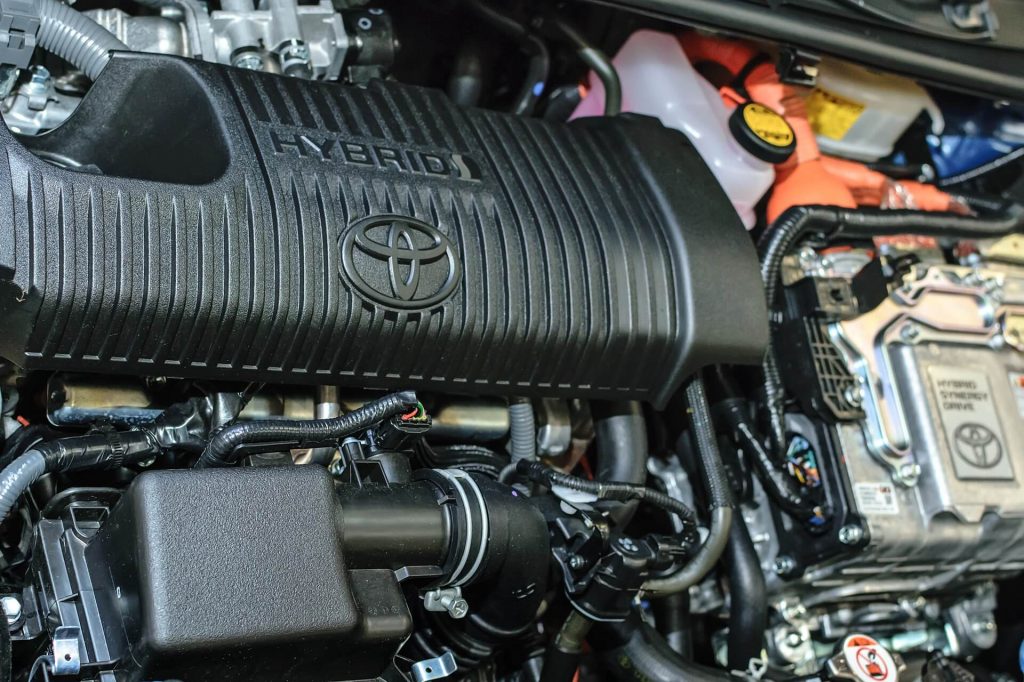
Regenerative Braking
Perhaps no other technology has defined the hybrid car like regenerative braking. The hybrid’s electric motor provides resistance to the vehicle’s drive train, resulting in the desired slowdown of the wheels.
But unlike conventional systems, with regenerative braking, the energy from the wheels turns the motor, which acts as a generator, and changes energy into electricity that would normally be wasted during the braking process. This energy is stored in the vehicle’s battery until it is needed by the electric motor.
Automatic Shutoff
A technology contributing to a commonality among hybrids is the automatic shutoff of the engine when the vehicle comes to a stop as well as the restart when it’s on the go again.
Just as regenerative braking is meant to avoid the waste of energy that occurs during the braking process, the automatic shutoff and start feature is meant to avoid energy usually wasted when a vehicle is idling.
Since hybrid cars have both engine and motor, some of them automatically shut off the gas-powered engine when the car is idle, switching to electric power.
Electric Motor Drive And Assist
The role of the electric motor can vary greatly from one hybrid to another. On one end of the spectrum, there are hybrid vehicles where the electric motor’s primary role is to provide an assist to the gas combustion engine when it is working harder during acceleration or while climbing a hill, for example.
On the other end, you have the near all-electric vehicles where the goal is to rely on the electric motor as much as possible.
Complex Computer Systems
Because of the complexity of merging two different drive trains to work seamlessly as one, a hybrid requires a sophisticated computer management system.
Hybrid control systems need to be heated and/or cooled, depending upon the climate and weather conditions to maintain certain operating temperatures.
The computer gathers data from many different sensors throughout the car for optimum functioning: vehicle speed, engine RPM, engine load, gear selection, temperature, etc.
It determines when the battery needs recharging when the motor can run the vehicle when it needs to start the engine back up, etc.
Yet driving a hybrid is just like any other car, thanks to this sophisticated computer system.
Yes, the driver simply pushes the accelerator and/or brake as needed, and the computer takes care of managing all the systems to create a seamless driving experience.
Beyond these basic technologies, most hybrid cars come equipped with many other features designed to make them both economically efficient and green.
To name some we can mention the lightweight materials that reduce overall weight, state-of-the-art aerodynamics (which are often borrowed from F1), and minimal-drag tires.
What Are The Different Types Of Hybrids
There are three main types of hybrids:
Mild Hybrids
The mild-hybrid cannot drive on the electric motor alone. It always needs the internal combustion engine to propel the vehicle while the motor acts as an assist. In this arrangement, the electric drive motor acts to assist the engine when extra power is needed but is incapable of propelling the vehicle alone.
Full Hybrids
A full hybrid, unlike its mild counterpart, can propel the vehicle solely on its electric motor and without the internal combustion engine running. However, it is only able to do this under certain conditions (usually low load conditions).
Under very light cruising load and light acceleration, a full hybrid can run on just the electric motor. As soon as additional power is needed the internal combustion engine will kick-in to provide full acceleration power.
Full hybrids tend to get much better fuel mileage than mild hybrids, plus much better city mileage since the electric motor is used much more in urban driving.
Plug-In Hybrids
Also known as PHEV (Plug-in Hybrid Electric Vehicle), it is a regular hybrid that has a large high-capacity battery bank that can be recharged by plugging into a normal household current. It is also able to use the on-board charging capabilities of normal hybrids.
While standard hybrids require a combination of regenerative braking and energy from the engine to recharge the batteries and propel the vehicle, plug-ins can essentially operate as electric vehicles with an internal combustion engine backup.
What Is The Difference Between Plug-In And Conventional Hybrid
Understanding the difference between conventional and plugged-in hybrids is not nearly as complicated as it might seem at first glance.
Plug-Ins
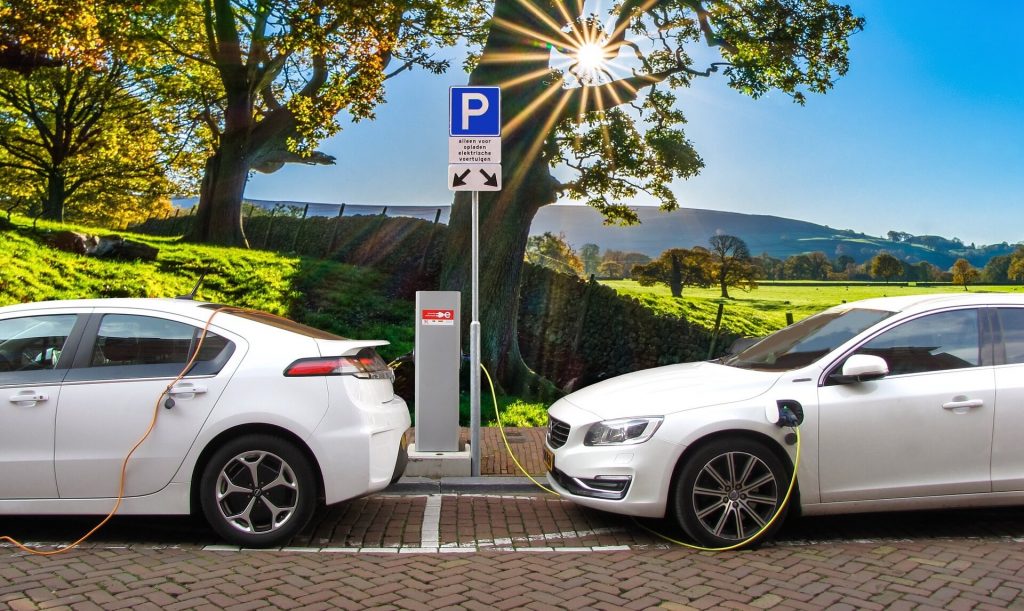
The so-called plug-in hybrid cars are designed to go long distances powered only by the electric motor.
They still need to be plugged-in between drives to keep the batteries charged and the electric motor available much like a fully electric car.
Plug-in hybrids still have a gas combustion engine onboard, allowing the driver to continue driving even beyond the limits of its electric motor. An example of a plug-in hybrid is the Chevy Volt which became the world’s first mass-produced plug-in hybrid with a range-extending onboard engine.
This type of hybrids typically have larger battery packs and are aimed at getting approximately twice the fuel efficiency of conventional hybrids.
Plug-in hybrids operate very much like an electric vehicle, except that they do have a gas combustion engine to take over should the battery become depleted.
Plug-ins answer consumer concerns that they could become stranded in an all-electric car.
Conventional Hybrids
Conventional hybrids, on the other hand, do not need to be plugged in. When the on-board batteries of these hybrids fall below a certain level of charge, their gas engines will automatically be engaged, charging the batteries, driving the car, and even charging the electric motor if necessary.
That’s why this kind of hybrid car never needs to be plugged into an electrical outlet overnight. There are many examples of this kind of hybrid, including the Toyota Prius, with many more appearing on the market each year.
Similarities Between Plug-In and Conventional Hybrids
Both of the types have these important things in common:
- Improved fuel efficiency over non-hybrid cars
- Battery packs
- A gasoline engine in addition to an electric motor
Differences Between The Two Hybrid Types
Understanding how plug-in hybrids work is key to understanding how they differ from a conventional hybrid car:
- A plug-in hybrid has the capability of being driven for long distances, without using any gasoline.
- Plug-ins are seen as having many benefits of an electric car, but also have the ability to switch between sources of energy (electric or gas), allowing them to reach the same driving range between refueling as conventional cars.
- A plug-in hybrid’s battery packs are larger and can be driven in zero-emission, all-electric mode under most driving situations.
- Once a plug-in hybrid’s battery charge is gone, an onboard gas engine is used to either recharge the batteries while driving or simply propel the car until the batteries are recharged via an electrical outlet.
What Exactly Plug-In Hybrid Is and How Does It Work
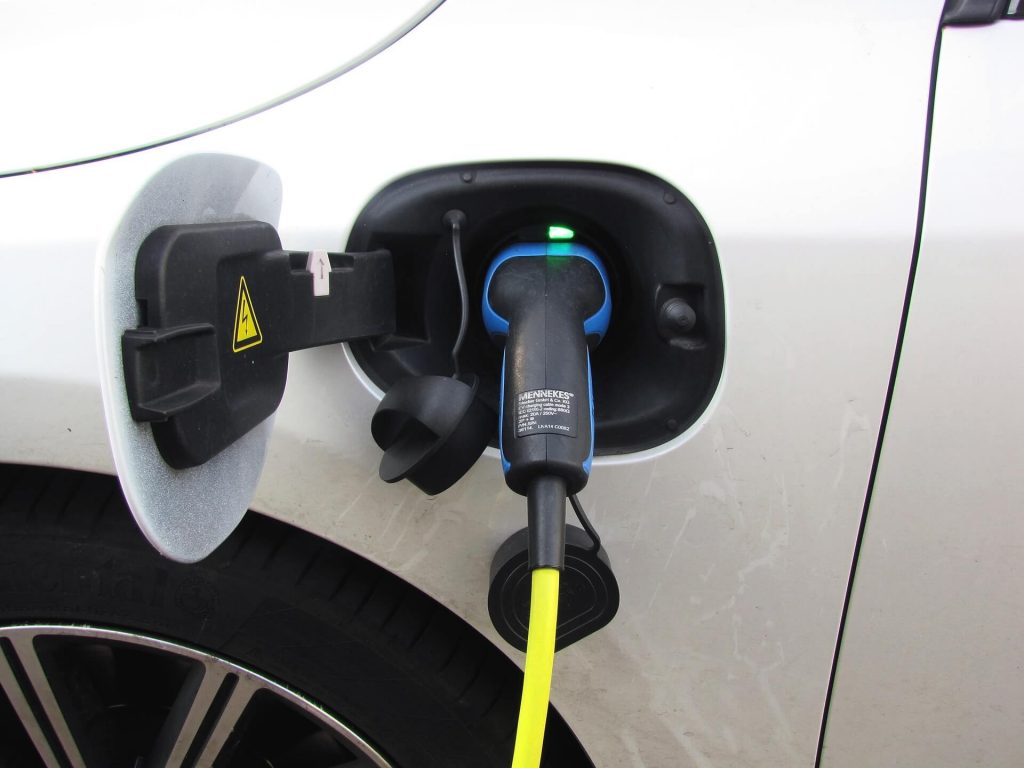
Plug-in hybrids are just what the name implies – they can be plugged in to be recharged.
They take electric vehicles to the next level since they are designed to rely predominantly on the electric motor for propulsion, with the internal combustion engine as a back-up.
That solves the short-range dilemma and speed limitations of all-electric and neighborhood electric vehicles (NEVs).
Plug-ins are intended to be recharged daily by connecting to a 110-volt household current. They are designed to handle a commuter-type range (20 to 60 miles) on just their electric charge, and they actually can drive on just their “electric vehicle power.”
Unlike other hybrids, they don’t need the engine to kick on to get around town. The internal combustion engine serves as a back-up to provide an increased range. If the battery runs low, the engine will kick on and charge the battery.
What Is It Like To Own A Plug-In Hybrid
Imagine you are a proud owner of a brand new Chevrolet Volt. You drive it home from work and pull into your garage. Plug it into the 110-volt outlet, head indoors, and forget about it while you eat, play with the kids and watch TV.
When you’re up bright and early the next morning ready to head to work, your Chevy has a fully-charged battery bank.
Unplug and drive to work. If we assume your daily commute takes you 20 miles to work and 20 miles back home then you will never need to start the internal combustion engine. It’s an all-electric-powered round-trip.
Electric Motor And Gasoline Engine Working In Harmony
When driven at slower speeds, such as those found in residential street driving or stop and go traffic, the hybrid vehicle will save fuel use by relying primarily on its electric motor which is powered by rechargeable batteries.
When the brake is pressed, the car’s wheels engage an electric generator which creates an additional “load” to help slow the car down. Referred to as regenerative braking, the more important piece of this process is that the generator also converts the car’s mechanical energy back into electricity.
This electricity is used to recharge the car’s batteries that power the motor.
But what about when you’re cruising down the highway?
Your car’s internal computer will tell it to switch over to the gas-burning engine as the primary energy source for the car.
Hybrid cars generally have a smaller engine designed with variable valve timing intelligence as well as other technological advancements that help the hybrid vehicle burn fuel as efficiently as possible. That contributes to better efficiency even while under the power of the gasoline combustion engine.
However, there are also times when both the gas-powered engine and the vehicle’s electric motor will work in tandem.
For instance, when you merge into traffic or speed up to pass someone, your hybrid will rely on its electric motor to give your car that added burst of power to complete the task as efficiently as possible.
It’s easy to see why hybrid vehicles of both types have garnered increased interest as gas prices have continued to climb.
When idling, these automobiles can sit quietly and avoid burning fuel whereas conventional cars will be wasting fuel by the minute.
Hybrids are primarily targeted to alleviate concerns consumers have had over managing an all-electric vehicle and have therefore grown more steadily in popularity than their all-electric counterparts.
Fuel Efficiency of Hybrid Cars
Here’s another way to think about the differences between traditional automobiles, conventional hybrids and, plug-in hybrids.
- Traditional mid-sized automobiles average 21 mpg city, 27 mpg highway.
- Conventional hybrids can average about twice the fuel efficiency of a traditional mid-sized car.
- Plug-in hybrids are expected to average about twice the fuel efficiency of most conventional hybrids.
- Plug-in hybrids running on biofuels, such as E85 or biodiesel, can just about eliminate their use of petroleum.
Comparison Table of Hybrids
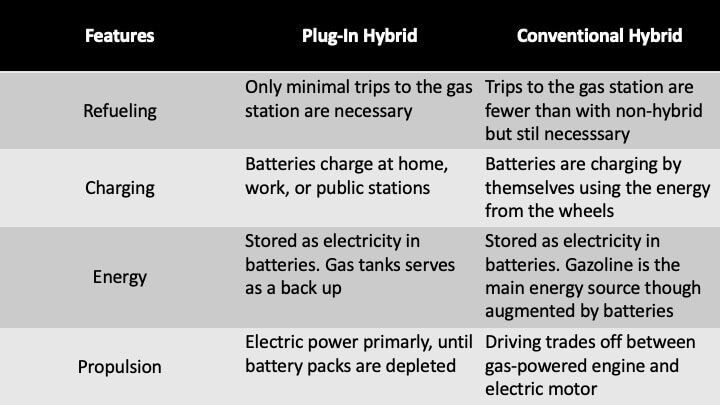
Five Reasons To Switch To A Hybrid Car
The popularity of hybrids has surpassed interest in all-electric vehicles and there are many hybrid types available, from plug-in to light eco-assist vehicles.
Once confined to only a few models, more and more automakers are adding hybrid versions to their more popular models, providing consumers with wider choices.
We’ve listed the top five reasons that will convince you your next car must be a hybrid.
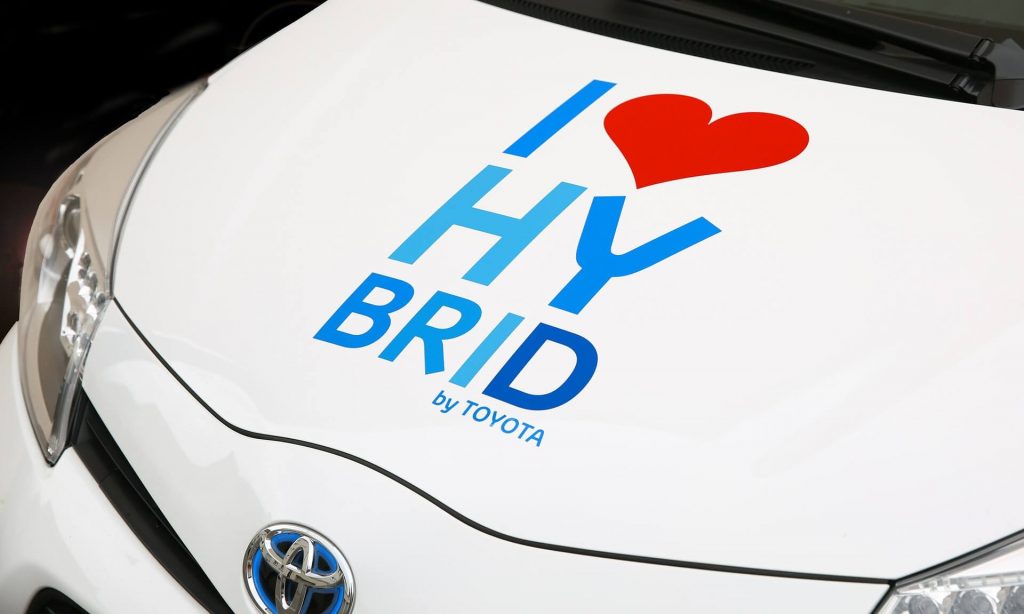
1. Saving Money
Yes, you really may find that you save money by making the switch to a hybrid vehicle, despite a higher initial purchase price.
Too often, potential consumers are turned off by hybrid versions of their favorite vehicles because they face a buying price several thousands of dollars higher than the conventional model.
But push a pencil a bit before deciding against such a purchase factor in the amount of gas purchase you can reasonably expect to save over the lifetime of the car. And don’t stop there.
Think about some of the potential costly repairs associated with gas combustion engines.
Once consumers shied away from the idea of hybrid vehicle repair because they feared costly battery replacement but that’s no longer the concern it once was thanks to automakers that give lifetime battery replacement guarantees and better battery technologies in general.
Fuel efficiency and fewer major repair bills mean it is more than reasonable for you to expect to spend less on your hybrid over the life of the vehicle.
2. Unmatchable MPG
There is little denying it: when comparing vehicles, hybrids are almost always class leaders for fuel economy.
The ability of a hybrid to make use of an electric motor in certain driving situations means you use less fuel.
Other features of hybrids, including some of the most impressive aerodynamics in the marketplace, help to further give them the edge. The same holds for driver assist technology that provides real-time feedback on the energy efficiency of your driving habits.
3. New Models Every Year
Whether you are looking for a small commuter vehicle, a touring luxury sedan, or SUV, there is now an increasing number of models on the market to fit your needs.
Once restricted to only a small number of models from just a few automakers, hybrids today are available from a large number of manufacturers and in a variety of styles.
No longer is style and functionality a deciding factor between a hybrid vehicle and its conventional counterpart. There are even versions of full-size pick-up trucks on the market today.
4. Living a Greener Lifestyle
One of the driving forces behind hybrid car ownership is that it supports a greener lifestyle. By decreasing reliance on a conventional gas combustion engine, you can reduce the emission of harmful greenhouse gas into the environment.
Many hybrid cars include other green features like interiors made of environmentally friendly materials and exteriors designed to resist drag and make the most efficient use of fuel.
Also, hybrids are being developed to make use of other alternative energy sources, greening up the electric generation that makes a hybrid a hybrid.
5. Supporting The Green Industry
It’s no secret that companies produce what consumers want. By supporting the demand for greener vehicles, you provide positive feedback to automakers and developers to improve the efficiency of hybrid technologies.
Without a growing market for hybrids, it is difficult to attract investment dollars into research areas such as improving battery technologies and the development of innovative power trains.
If the U.S. demand for hybrids weakens, automakers will focus on producing them for markets in other areas of the globe and the number of domestically available hybrid cars will continue to shrink.
Labeling Hybrids
Just when you think you’ve sorted out the differences between conventional hybrids and plug-in hybrids, you get hit with some additional vocabulary—or worse yet, acronyms.
You may have heard plug-in hybrids referred to as plug-in hybrid electric vehicles of PHEVs. This refers to the ability of these new-generation hybrids to go the distance, due to their larger batteries and onboard generation capabilities.
If the onboard gas engine is used exclusively for recharging batteries and not for the power train, the plug-in hybrid may sometimes be known as an extended-range electric vehicle or E-REV.
Frequently Asked Questions About Hybrid Cars
We’ve answered some of the most frequently asked questions about hybrids below.
Where are the batteries of a hybrid car located?
Well, first off, hybrids have two batteries. They have a regular 12-volt starting battery much like a regular car that is used for the main power bus (e.g. lights, horn, stereo) and in some instances, for starting the internal combustion engine.
This battery is generally stored in the engine bay. The second battery is the much larger high voltage battery bank that powers the electric drive motor.
This battery bank consists of many, many small low voltage cells that are connected in series to develop the necessary high voltage that is required to operate the electric drive motor systems.
This bank is then stored in a controlled environment “hold” within the chassis of the vehicle where it is protected from exposure, as well as maintained at optimal operating conditions.
Is it expensive to replace a hybrid battery? How long does it usually last?
The short answer is – yes, it is expensive to replace hybrid batteries and it can cost something about $3,000 (or more) for a full hybrid battery replacement.
But on the other hand, batteries have proven themselves to be extremely reliable. And as long as they are not abused and the car charging control system operates effectively, they can be expected to last for nearly the life of the vehicle.
Manufacturers are providing generous battery warranties (generally about 8-10 years and 80 000 to 100 000 miles), but as with most warranted components, they are designed to last well beyond the coverage period.
It would not be unreasonable to expect the life of a battery pack to exceed 200,000 miles.
Furthermore, as more hybrids take to the roads, reclaimed batteries from out-of-service (wrecked) cars will become more available at steep discounts.
How Do Hybrid Batteries Re-charge? Do I Need to Plug a Hybrid In?
Regular hybrids recharge their batteries by reclaiming energy through a process called regenerative braking and/or while driving on engine power. Regular hybrids do not need to be plugged in.
When the battery is heavily taxed by a lot of electric motor usage without a lot of braking, the internal combustion engine picks up the slack while the battery comes back up to charge.
To increase electric motor cruising time, some manufacturers are creating plug-in hybrids that have more powerful batteries that can be recharged by “plugging in” the vehicle to normal household current. This feature allows the vehicle to perform more like a true electric car and less like a conventional gasoline car, all the while delivering exceptional fuel mileage.
What rebates and tax breaks are available for hybrids?
There are various rebates and tax breaks available depending upon where you live. U.S. federal and state governments offer a variety of tax incentives and credits to encourage hybrid vehicle ownership. Cost incentives vary state-by-state, so it’s also smart to check your state’s incentives. And give your insurance company a call, many offer discounts to hybrid owners.
Remember to check with your tax advisor to confirm the current active rebates that apply to the vehicle you choose.
Are hybrid cars safe?
Yes, hybrid vehicles are just as safe to drive as any gasoline-powered vehicle. Manufacturers design them to withstand the same crash specifications as normal cars and they come with the same airbag and restraint systems.
The only area that is of any concern is the high voltage circuits for the drive motor assembly. These components are marked with the cables wrapped in a bright orange casing and are not located in any areas where the vehicle occupants would ordinarily encounter them.
Do Hybrids Cost More To Maintain?
Possibly, but in most cases, no. The cost of maintaining a hybrid car is quite similar to the expenses of maintaining a conventional car.
Other than their sophisticated electric drive motor assemblies and the large battery pack, all other hybrid vehicle systems are quite similar to traditional cars.
They can cost the same even potentially less to maintain. With regenerative braking, less wear and tear is imposed on the regular friction brakes resulting in much longer pad life.
Furthermore, full hybrids can shut the engine down, allowing the electric motor to take over, resulting in less wear on all the engine components allowing for fewer maintenance needs.
The one area where maintenance costs of hybrids could easily exceed those of conventional vehicles is the electric drive battery packs. Yet with developments in battery technology (NiMH and Li-ion) and reliability, most hybrid manufacturers warrant the battery packs for 80 000 to 100 000 miles.
And as more and more hybrids hit the roads, real-world experience is showing that few battery failures occur and there have been instances in which the batteries have lasted 200 000 miles and longer.
What Hybrid Automobiles Are Currently Available On The Market?
Hybrids are quite popular and manufacturers are responding to the demand for more models through all categories – from small urban cars to pickups and SUVs.
Conclusion
Hybrid vehicles and all-electric cars known as alternative fuel vehicles are gaining more and more popularity over the last couple of years.
Car manufacturers are racing to develop longer ranges, more reliable batteries, and a diversified portfolio of greener models.
Hybrid cars are still the more preferable choice over all-electric cars due to the reason that they flexible enough to go supper long distance without the worries and engagement of stopping to-recharge batteries too often.
We are confident hybrids will continue to develop becoming even more fuel-efficient and reliable.

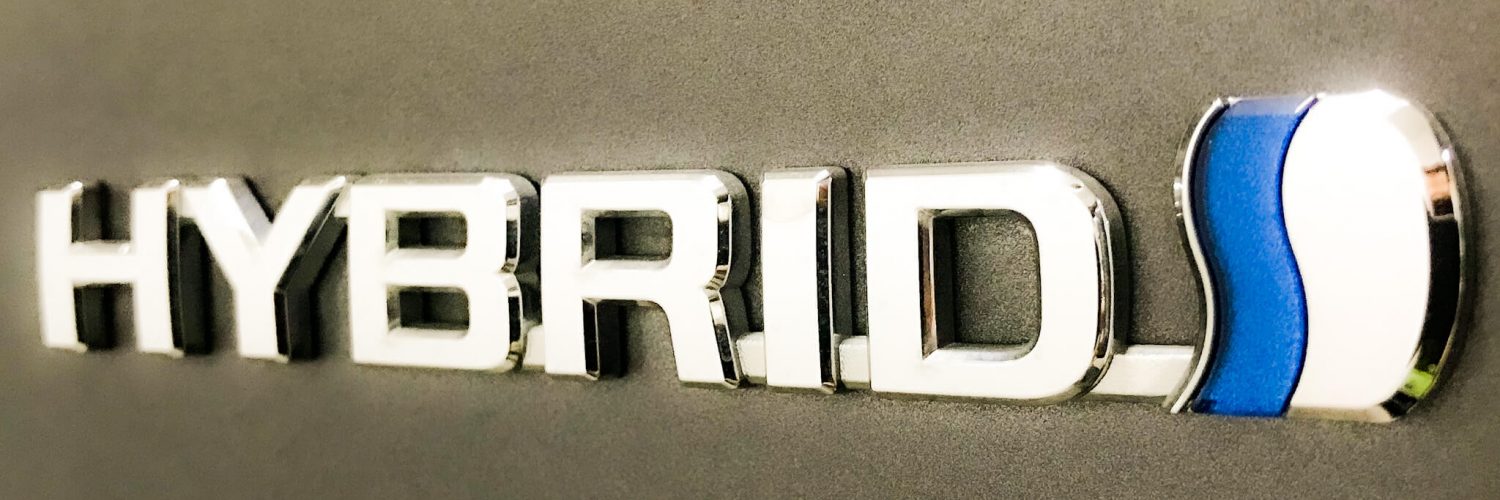

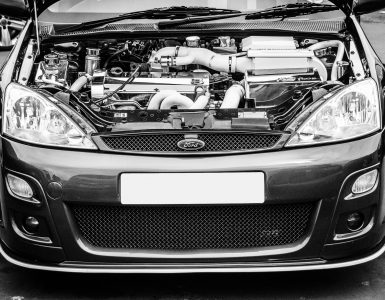
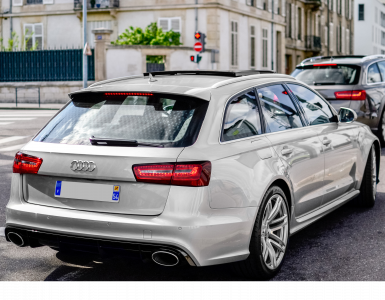















Add comment